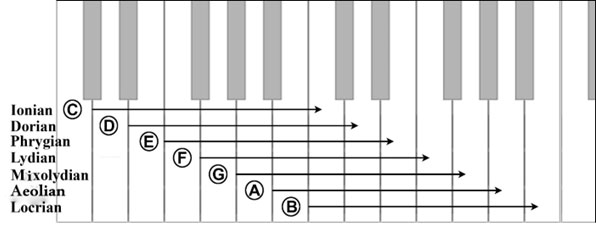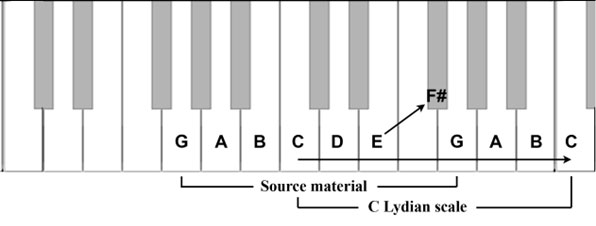
In 2017, I made video packages covering different topics for the online tutorial company Groove3 (now part of Hal Leonard) All of the titles performed well, and particularly the series titled Improvising Know-How; Modes, which provided a quick and useful start for the understanding (and doing) of improvisation via modes. Western Harmony Simplified was the source material for the videos. Below, I introduce modes as outlined in the book.
If you’re visually inclined and wish to pursue the topic through the videos, you could find them with a quick search. Heads up that Groove3 is a paid site – an excellent one at that – but letting you know that the videos were contracted on a buy-out basis, so I have no skin in that game. As an alternative, you can read below and then dig deeper via the book, which, of course comes with lifetime technical support from the author! 🙂 I’m always open to receiving your emails – with your thoughts, feedback, and answering any questions you might have.
A DIFFERENT PERSPECTIVE ON MODES –– Introduction
In Western harmony, modes are essentially seven note scales built from a given key (in our case, we’ll use C major). Each mode evokes a different harmonic color. In the key of C (and in the other 11 keys) there are 7 modes, each of these 7 modes built by starting the ‘root’ note of the mode on one of the seven notes of the major scale. By changing the home (root) note of the scale but still using the notes of C major for the scale material, whole harmonic palettes are derived that can be used for songs, improvisation, or, as we will examine in another entry, chord formation and coloring.
The names of the modes starting on the C and continuing through the notes of the C major scale are as follows: the scale starting on the 1st note of C major (note C): Ionian; the scale starting on the 2nd note of C major (note D): Dorian; E: Phrygian; F: Lydian; G: Mixolydian; A: Aeolian; and, B: Locrian.

Try to play through each of these modes. By playing either the scales directly starting on the given root note, or by playing any of the notes of the scale in the right hand and playing the root note in the left hand, you’ll hear that each scale/mode has a unique flavor. And there’s good news – just as the C major scale is used as the diatonic template in the book Western Harmony Simplified for ease of understanding, using the white note scale to start learning modes also makes learning and playing modes easier.
Feel free to improvise on any of these modes using the left hand as a drone on the root note, and using the right hand to play any of the notes available in whatever combinations might arise. (Go for it, the notes are all white; they can’t be missed!) This is a great exercise for musicians who have trouble improvising because the modes provide source material that does not require extensive technical knowledge or experience with different types of chords; all that is required is knowledge of one scale.
For those who are feeling adventurous and want to explore modes using another key center, here is an example of the mode concept using the G major scale as the foundational material. Notice that the G major scale has one sharp which needs to be incorporated into the individual modes – here is an example of the C Lydian mode which is derived from the G major scale material.

Start Reading Now
Get 3 Free Chapters

Start Reading Now
Buy the Book




